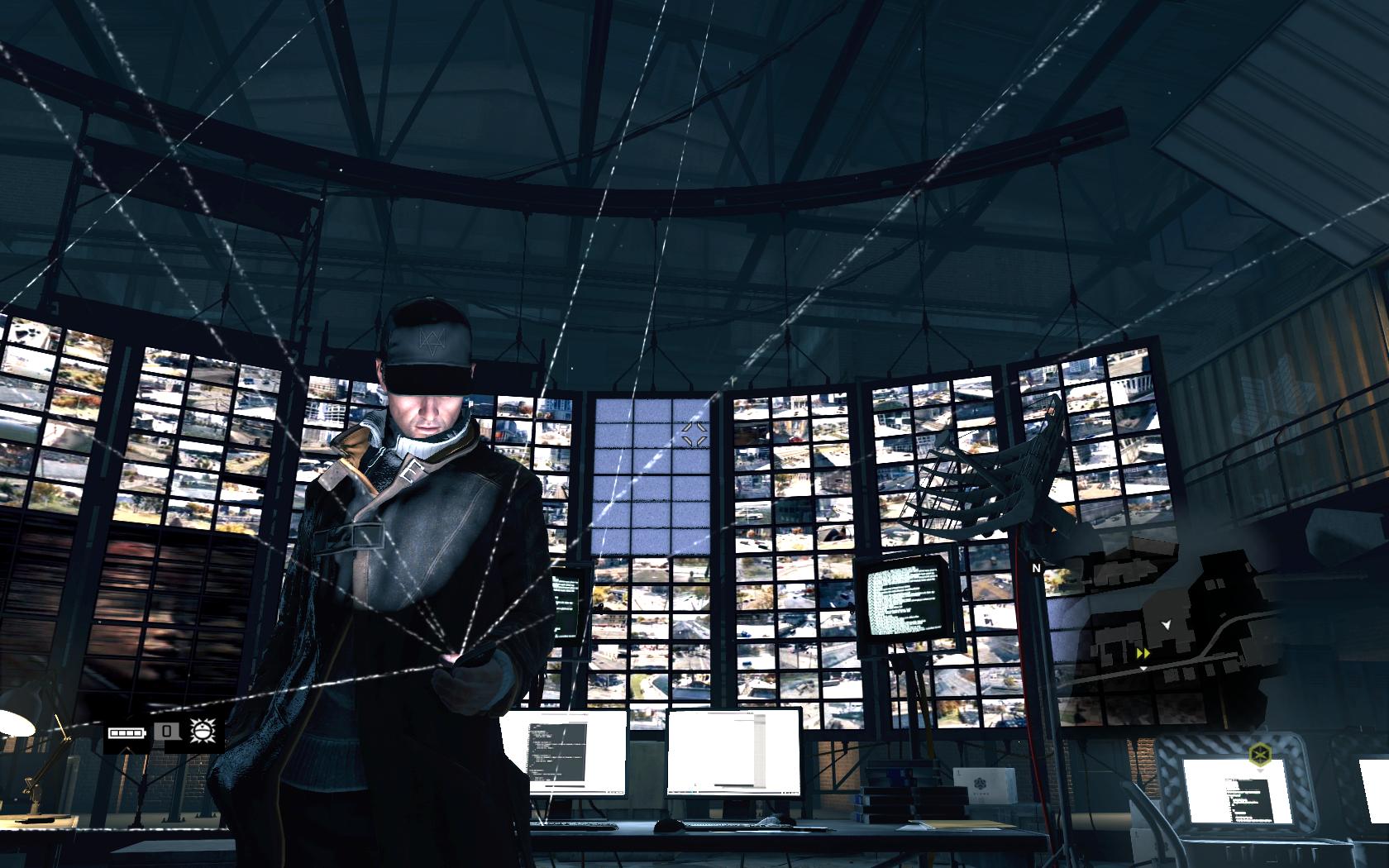Our Verdict
Creative hacking and covert multiplayer modes bring exciting new life to otherwise familiar open-world man-shooting.
PC Gamer's got your back
Price: $60/£40
Release date: Out now
Publisher: Ubisoft
Multiplayer: 1v1, up to 8 player vs. or co-play, online only
Link: Official site
I'm racing a stolen motorcycle through a sprawling cityscape, cops wailing behind me in pursuit, when I suddenly smash into a car, shoot through the air like a missile, and slam face-first into a wall. Nothing new—I've done this many times, in many games. While I'm sailing through the air, however, my smartphone informs me the driver of the car I've struck is Martin Huntley, age 39, who works as a telemarketer, makes $24,000 a year, and is into autoerotic asphyxiation. OK. That part's new.
There's no shortage of the familiar in Ubisoft's third-person open-world action game Watch Dogs, beginning with our protagonist, Aiden Pearce. He's got a few days of beard stubble, speaks in a whispery growl, and has zero sense of humor. He's haunted by, and feels responsible for, a tragedy in his past, and he's out for revenge—or is it redemption? To find those responsible for his misery, Aiden needs to uncover a shadowy conspiracy, secret organizations, organized crime, and government corruption, and will employ the help of—get this—an eccentric cast of oddball characters, some with secrets of their own. There is one new and interesting thing about Aiden, however: he's got a really, really cool phone.
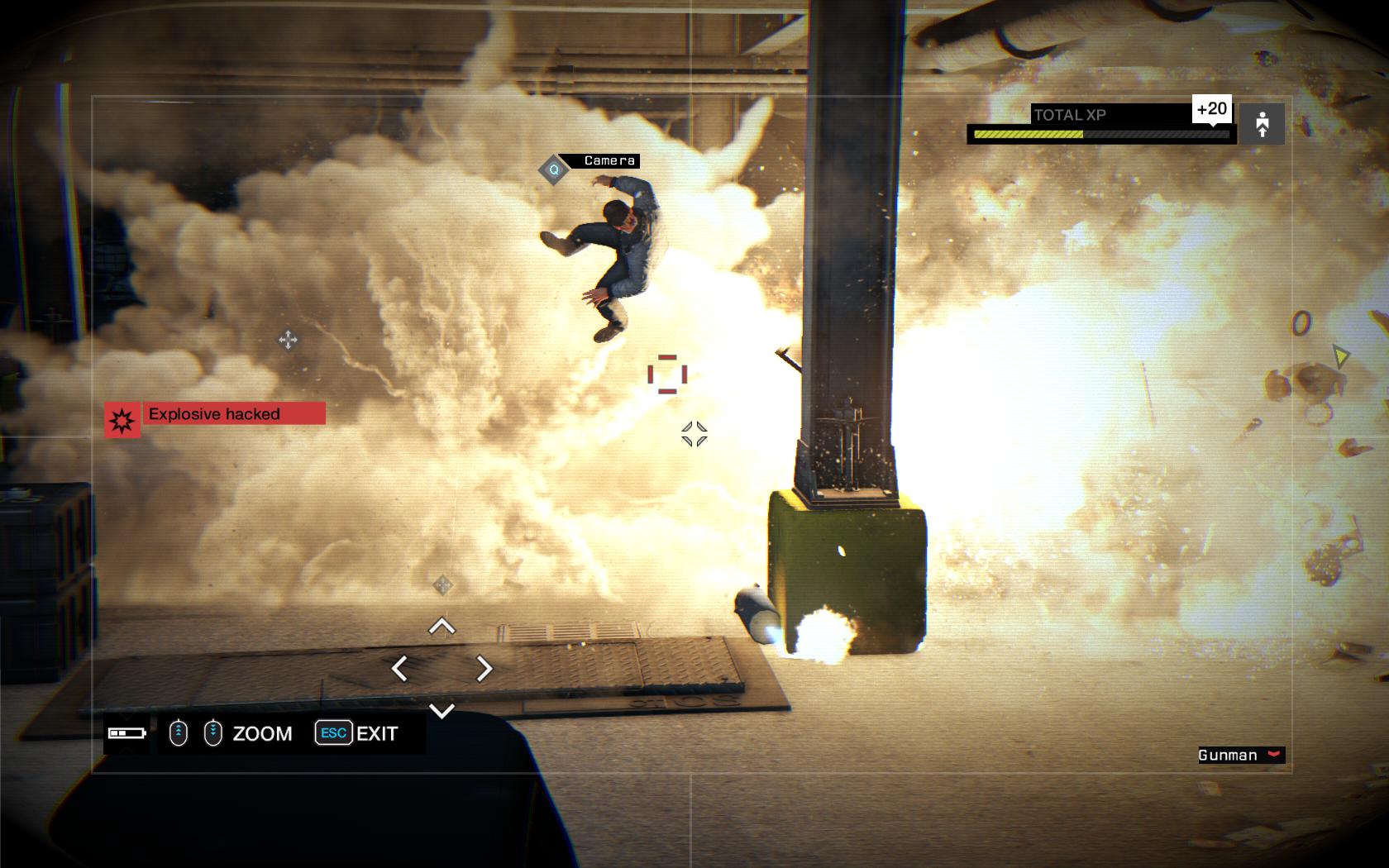
I have a lot of issues with Watch Dogs, but Aiden's phone is owed a lot of credit for how much I enjoyed it. In profile mode, the phone identifies citizens around me and allows me to hack into their phones with a keypress, downloading bank information and letting me listen in on their phone calls and read their text messages. And, of course, it tells me their secrets. Miles Renner is late with child support payments. Conner Eggers is on probation. Bill Woods is affiliated with a racist organization. Think of everything you've ever typed into an email, text message, or search engine—yes, even in incognito mode, weirdo—and then think about some mopey, stubble-faced man in a stupid futuristic coat, standing on the opposite streetcorner, reading all about it.
Hack & crash
Hacking people is just the beginning. My phone has access to ctOS, an omnipresent computer network that manages the entire city of Chicago. I can change traffic lights to cause accidents ahead of me (useful if I'm pursuing someone) or behind me (handy if I'm being chased). The doors of city parking garages can be opened and closed and drawbridges raised and lowered for quick escapes. After a few skill upgrades, I can blow up steam pipes buried beneath the streets, raise barricades and tire spikes, disrupt radio transmissions, cause massive blackouts, and even disable helicopters. Not only are these abilities a lot of fun, they're absolutely necessary: Aiden's is constantly being chased by both crooks and cops, and he can't fire a gun while driving.
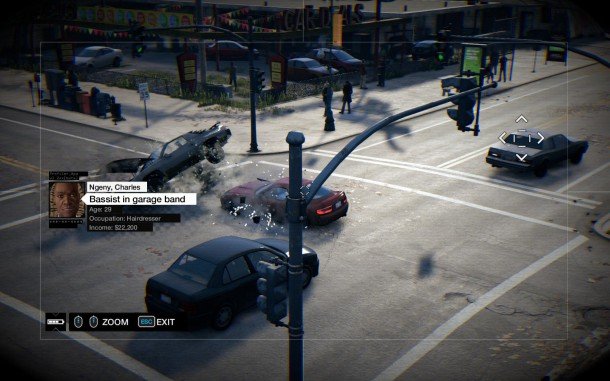
Where the magical smartphone truly shines, however, is during the infiltration of secure locations crawling with armed guards. No need to rush in, just scout the perimeter until you spot an external security camera on the side of a nearby building. Accessing it with your phone allows you to "hop" into the camera and look through its lens. If you spot another security camera with the camera you're controlling, you can project yourself into that one, and so on, forming a chain of digital leaps Aiden refers to as "riding the cameras." It's not just wall-mounted security cameras, either: you can jump into cameras built into laptops and even a camera someone is carrying with them.
Keep up to date with the most important stories and the best deals, as picked by the PC Gamer team.
These line-of-sight infiltration puzzles are wickedly fun. Riding cameras allows you to cross streets, zoom around corners, travel down hallways, see into secure areas, and traverse entire buildings, top to bottom. While in a camera, you can also hack anything you can see. Spot a computerized lock and you can open it, peer at a server and you can infiltrate it, find an elevator and you can activate it.
The result of all this camera-riding and goon abuse makes me feel like the electronic ghost of Batman: swooping silently between vantage points, peering down at moronic henchmen, picking off enemies one by one.
Back to those armed mercenaries patrolling the building: many of them are hackable as well. If they have a phone, you can distract them by sending a loud blast of music from their speaker, or disable it, preventing them from calling for backup. The best is when they're carrying an explosive device, which you can trigger, giving them just a few seconds to frantically dig it out of their pocket and get rid of it. Sometimes they're too slow and perish in the explosion, and sometimes they're successful, lobbing the bomb away but still causing a general panic. (One time, wonderfully, a guard threw it directly at the feet of specific bad guy I was there to rub out, saving me a lot of work.) If they don't have explosives on them, feel free to overload a nearby junction box: they explode nicely too.
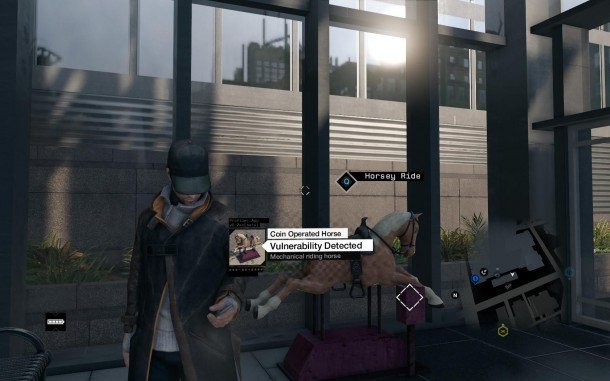
The result of all this camera-riding and goon abuse makes me feel like the electronic ghost of Batman: swooping silently between vantage points, peering down at moronic henchmen, picking off enemies one by one. There are entire buildings you can infiltrate and escape from, all while standing safely outside on a street corner, looking like just another dude absorbed with his phone.
Isn't it refreshing to hear about hacking that doesn't require a pipe-based minigame? Now, let's talk about hacking that requires a pipe-based minigame. Some servers require a puzzle-solving session called intrusion, in which you must direct a stream of blue hacking energy (water) to an endpoint by rotating nodes (pipes). It's actually sort of enjoyable, though it gets repetitive and naturally becomes more complex the deeper into the game you go, occasionally including multiple levels and timers that reset your progress.
Hang up and throw down
Remote hacking and camera riding gets you a lot of places, but many missions require a personal touch, by which I mean stealthily sneaking through buildings, shooting a thousand men in the face with guns, and driving at top speed all over the city. Stealth first: Aiden is nimble while moving from cover to cover and gifted in the ways of parkour and silent takedowns, not unlike some assassins I could name. I found the gunplay mostly satisfying: mouse-aiming felt natural without being too easy, the bigger guns had a reasonable amount of recoil (except for the full-auto shotgun, which somehow has none), and while Aiden doesn't have access to a rocket launcher, the single-shot grenade launcher got me out of more jams than I can count. There are plenty of ways to increase weapon damage and precision on the combat skill tree, and Aiden has the slow-motion bullet-time ability that all true heroes are born with these days. Enemy AI isn't fantastic, but they do put together rushes and flanking maneuvers if you stay in one spot for too long, meaning you can't just sit there waiting for heads to pop out one-by-one.
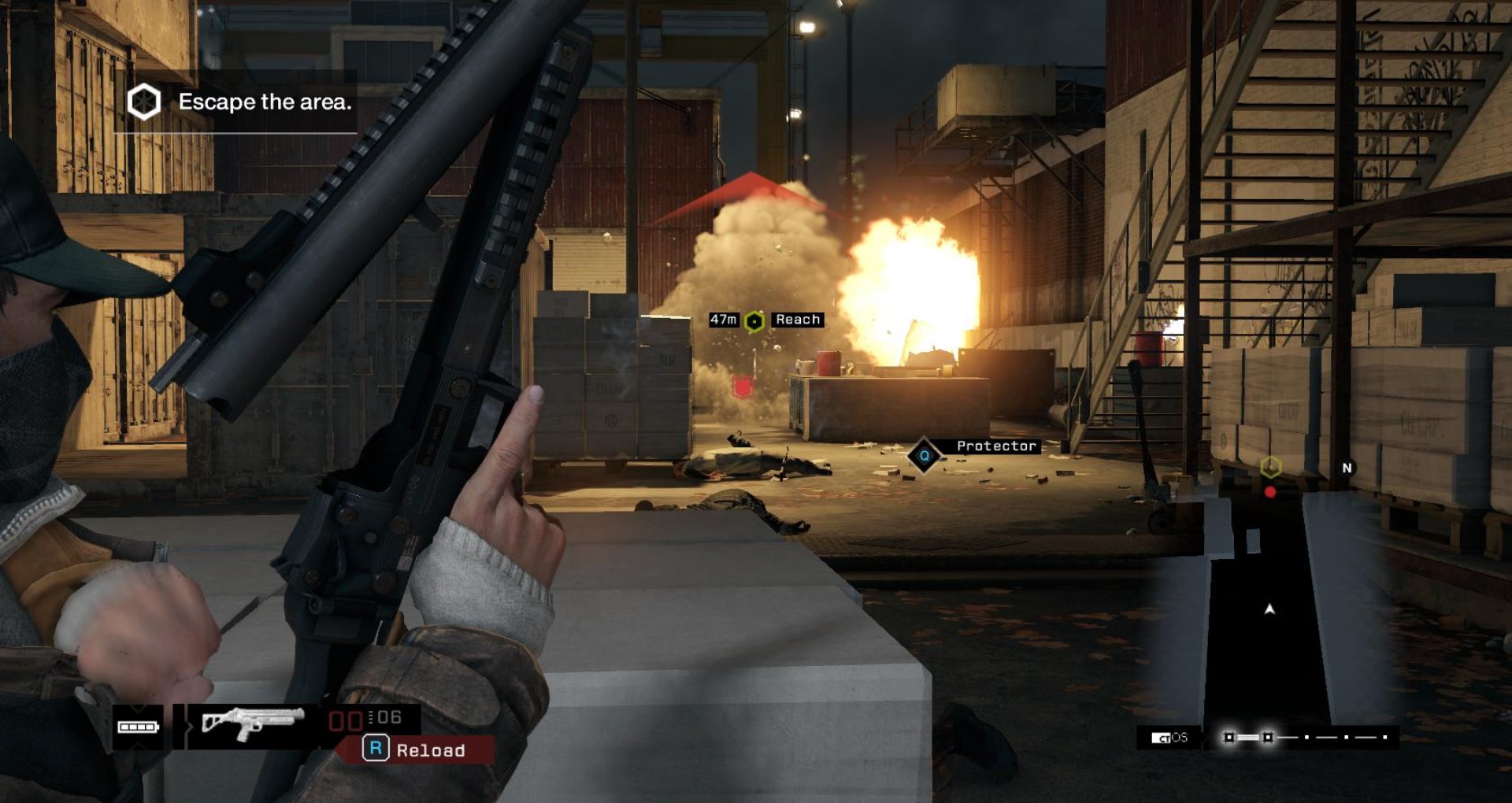
Less satisfying is the driving, which I found fairly awkward with keyboard and mouse. I eventually switched to my wireless 360 controller during the driving portions, swapping back to mouse and keyboard for everything else. On the plus side, the game detects what you're using when you're using it, instantly updating any on-screen prompts to reflect your control scheme. More evidence of the game's design for console: the minimap is ridiculously huge and the notifications are scenery-blotting. Also, brace yourself for yet another irritating checkpoint save system. Did you enjoy that lengthy phone call at the start of the mission so much you want to hear it again? Interested in re-killing those first twenty goons before getting to the boss goon who killed you? Want to restart the driving mission standing a hundred feet from the nearest car? If not, I'd suggest never, ever failing a mission.
If you're wondering about Ubisoft's usual complement of insta-fail tailing, stealth, and escort missions, yes, there are several of them, though occasionally you can follow your target by jumping into security cameras, which is considerably more fun. Other times, you'll be guiding a companion from cover to cover while you watch them through cameras and distract the guards in their path, which is a nice change from having to protect someone vulnerable while dozens of enemies swarm in. (There are a couple of those, too.)
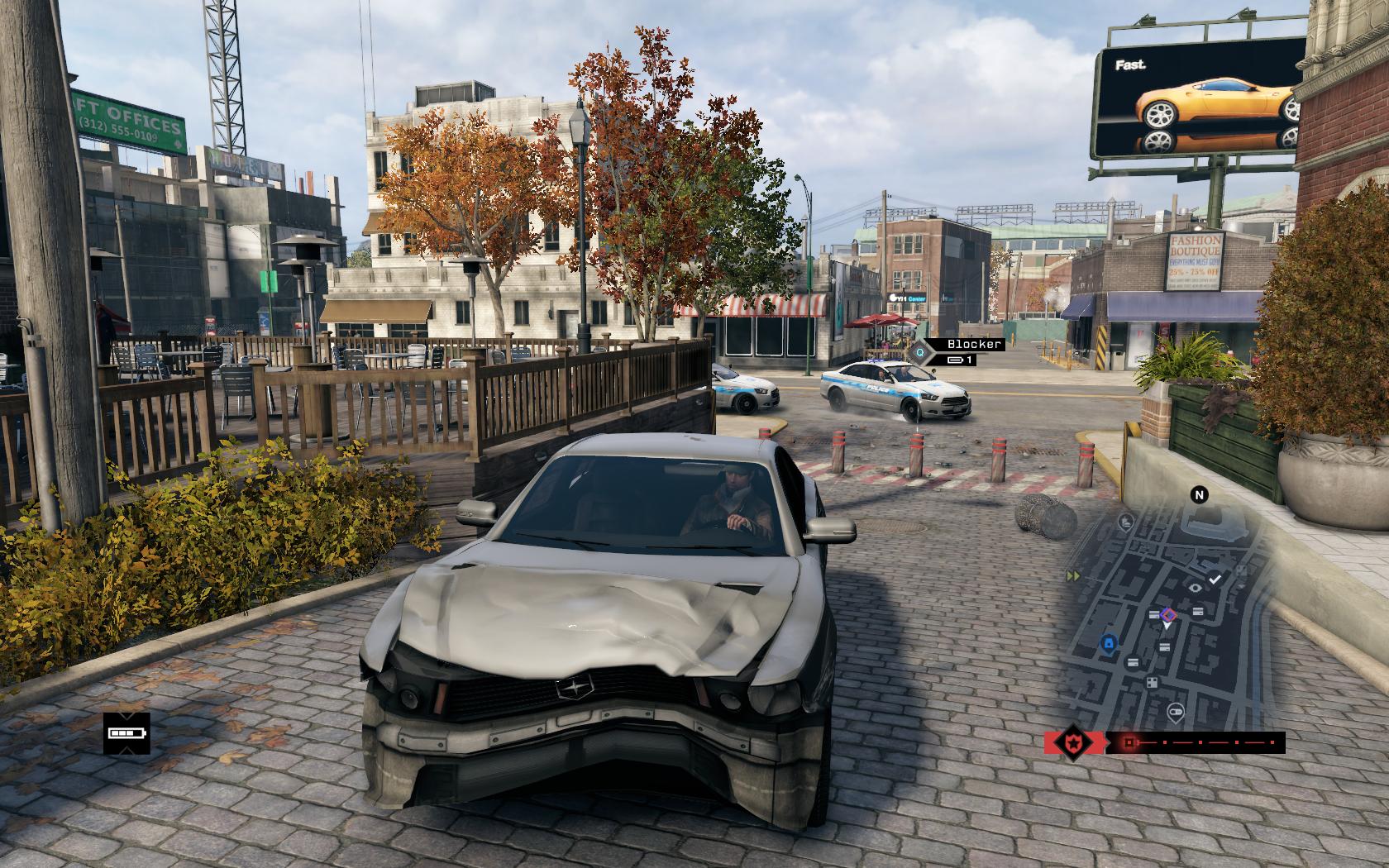
Chicago itself feels a bit bigger than GTA IV's Liberty City, and downtown, the docks, the projects, and the suburban areas are all seamlessly connected (the only loading screens you'll encounter are while fast-traveling). I found the city attractive if not particularly memorable, perhaps because there are no planes or choppers to pilot over it, nor infinite parachutes to leap off its buildings with. Speaking of buildings, they are mostly facades, with the exception of mission-based buildings, stores, and the occasional enterable skyscraper lobby. As far as the citizens go, they're not as loud, profane, or obnoxious as those in GTA or Saint's Row, which makes them considerably less fun to terrorize with explosions or reckless driving. You're discouraged against tormenting them anyway, as killing or injuring citizens (not to mention the police) damages your reputation and makes them more likely to call the cops on you.
Luckily, there are plenty of enjoyable diversions, activities, and side-quests to distract you from the semi-blandness of Chicago and its residents, and almost all of them involve hacking of some sort. I loved solving the ctOS tower puzzles, which unlock new locations and hideouts (as in Assassin's Creed games and Far Cry 3). You get to Camera-hop up and around buildings, solve environmental puzzles, and perform a bit no-pressure parkour, easily making it one of the most enjoyable activities of the game.
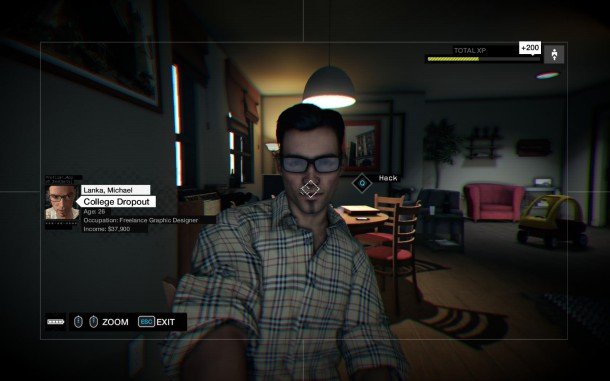
Busy signals
There's also plenty of extra work in Watch Dogs for the eager vigilante. Notifications pop up (a little too often for my tastes) alerting you to upcoming crimes in the area. Some hunting around will reveal either the potential crook or possible victim, and you can tail them, covertly witness the crime, and then chase down and punish the offender.
Other activities are scattered around the city and feature a mish-mash of camera-based infiltration and observation, device hacking, combat, stealth, high-speed driving, and sometimes all of the above. There are also games like chess and poker (you can use a camera to sneak a look at an opponent's cards and monitor his stress levels), parkour challenges and auto races, and if you're looking for straight-up city destruction, you can take a "digital trip," allowing you to take a virtual skyscraper-scaling spider tank on a rampage, which makes up for the lack of actual, driveable tanks in the game and lets you blow up cops without damaging your reputation. Good fun.
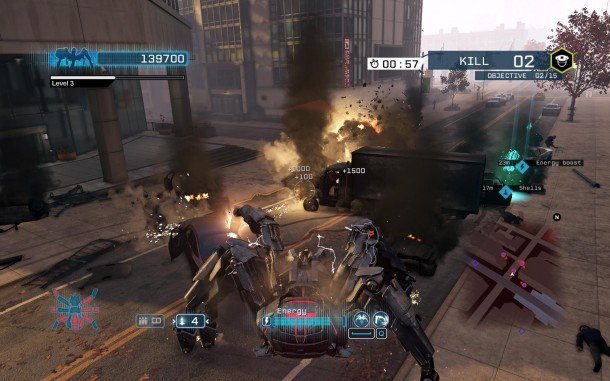
There are also mysteries to solve: codes that can only be viewed from certain cameras, a serial killer stalking the populace, and audio files to collect and use to piece together additional stories. And, of course, you can unlock new vehicles, buy new guns, and visit clothing stores to purchase slightly different versions of your stupid coat. There's genuinely a lot to do in Watch Dogs, dozens of hours worth, along with a main storyline that takes a little over twenty hours to complete.
With so much to do I was a little worried I wouldn't have time to check out Watch Dog's multiplayer modes, but that problem was solved for me when I was notified that multiplayer was, in fact, checking me out. Another player was in my game—in my single-player game—hacking into my data. In this one-on-one hacking game, you'll need to locate the intruder with your phone (they're disguised as a normal citizen) and kill them before they finish their download and slip back out of your game.
Suddenly realizing another human player is in your game is wonderfully unsettling, especially since they've potentially been there for several minutes before you were ever alerted. Shadowing you. Watching you. Thematically, it's perfect, what with all the spying you do in Watch Dogs, and it's especially fun when you're the invader. In one heart-pounding match, I sat hunched behind the wheel of a parked car in a busy part of town, watching my mark circle the area again and again, frantically scanning for me among the NPCs. My hack slowly climbed to 99%—so close!—before he finally spotted me and ran toward my car. I gunned the engine and screeched away into traffic, his gunshots thunking into my hood, and lost him after jumping a drawbridge, safely returning to my game with most—not all—of his data. Incredible fun.
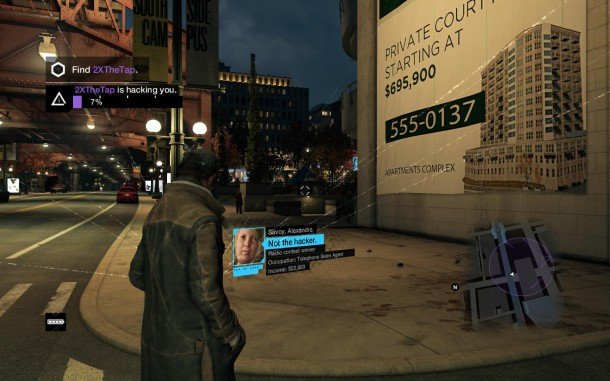
There are group activities too, like races, as well as some co-op play, but I think the one-on-one hacking and tailing challenges are far more interesting. If you don't like the idea of players entering your game unannounced, or if you just don't want to be disturbed by invitations to join in multiplayer shenanigans, you can always play in offline mode.
I found little to like in Watch Dogs' story, however. Aiden's gloominess and introspection are immediately tiresome, and the most enjoyable character, a fixer named Jordi, gets almost no screen time. There's a sex slave auction scene that seems to serve no purpose but to provide another woman for Aiden to rescue. She is immediately forgotten, though saving her opens human trafficking side missions: complete ten of them and you'll unlock a new car. With so much thought put into Watch Dogs' enjoyable hacking systems and creative multiplayer modes, it's disappointing to discover that Ubisoft's storytelling hasn't made any advancements.
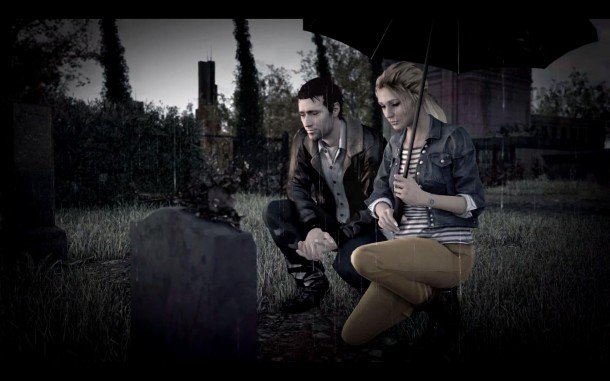
Technically, Watch Dogs gets a pass. I ran it mostly on medium settings (my specs: Intel Core i7 @ 2.80 GHz, 8GB RAM, Nvidia GeForce GTX 660 Ti) and got a steady, medium-looking performance, with the only noticeable framerate drops occurring while driving. There's a standard number of video options to fine tune, but no FOV slider, though I thought the FOV was fine as is. I don't recall encountering any bugs or glitches—the game never crashed or froze—and as much as I was dreading it, Uplay worked fine.
At times, Watch Dogs can seem like a game we've played before, just another open-world city to speed through in a series of stolen cars, another crowd of hoods and hitmen to add to your body count, another moody, growling protagonist to endure in cutscenes. When it deviates from the familiar, however, it really soars: hacking the city of Chicago and all its cameras, utilities, and communications is freeing and fun, and invading the games of unsuspecting players is an unusual and welcome thrill.
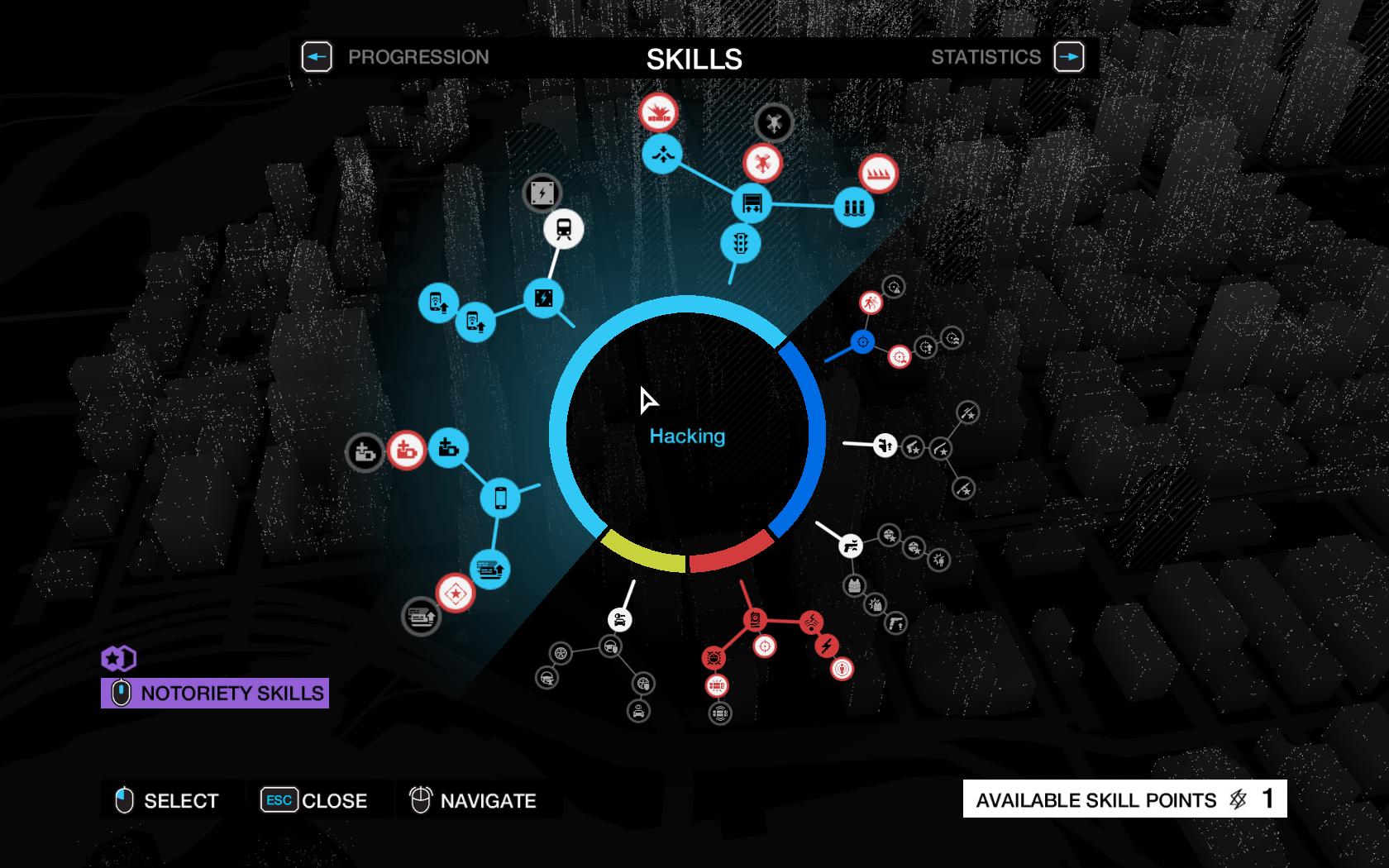
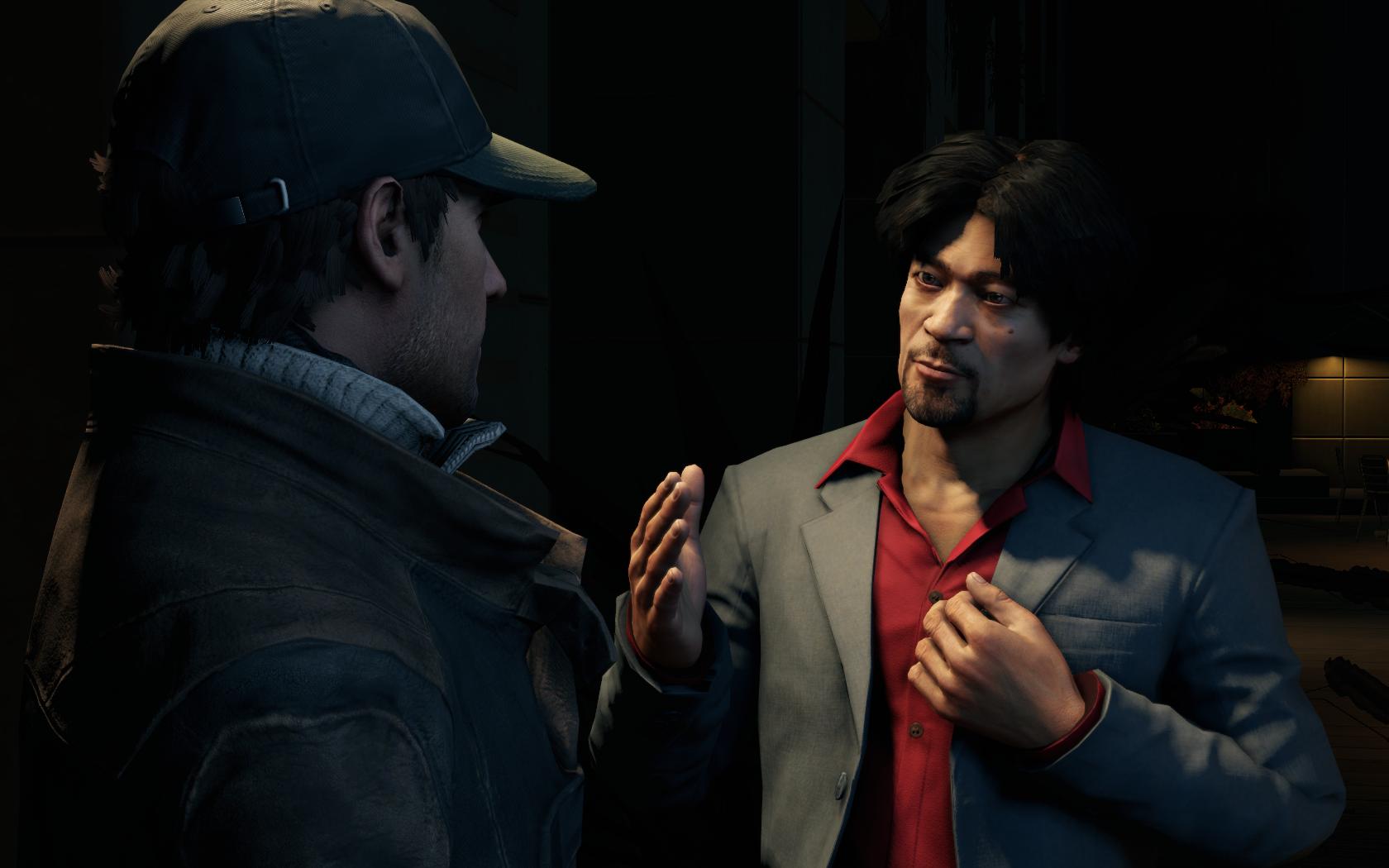
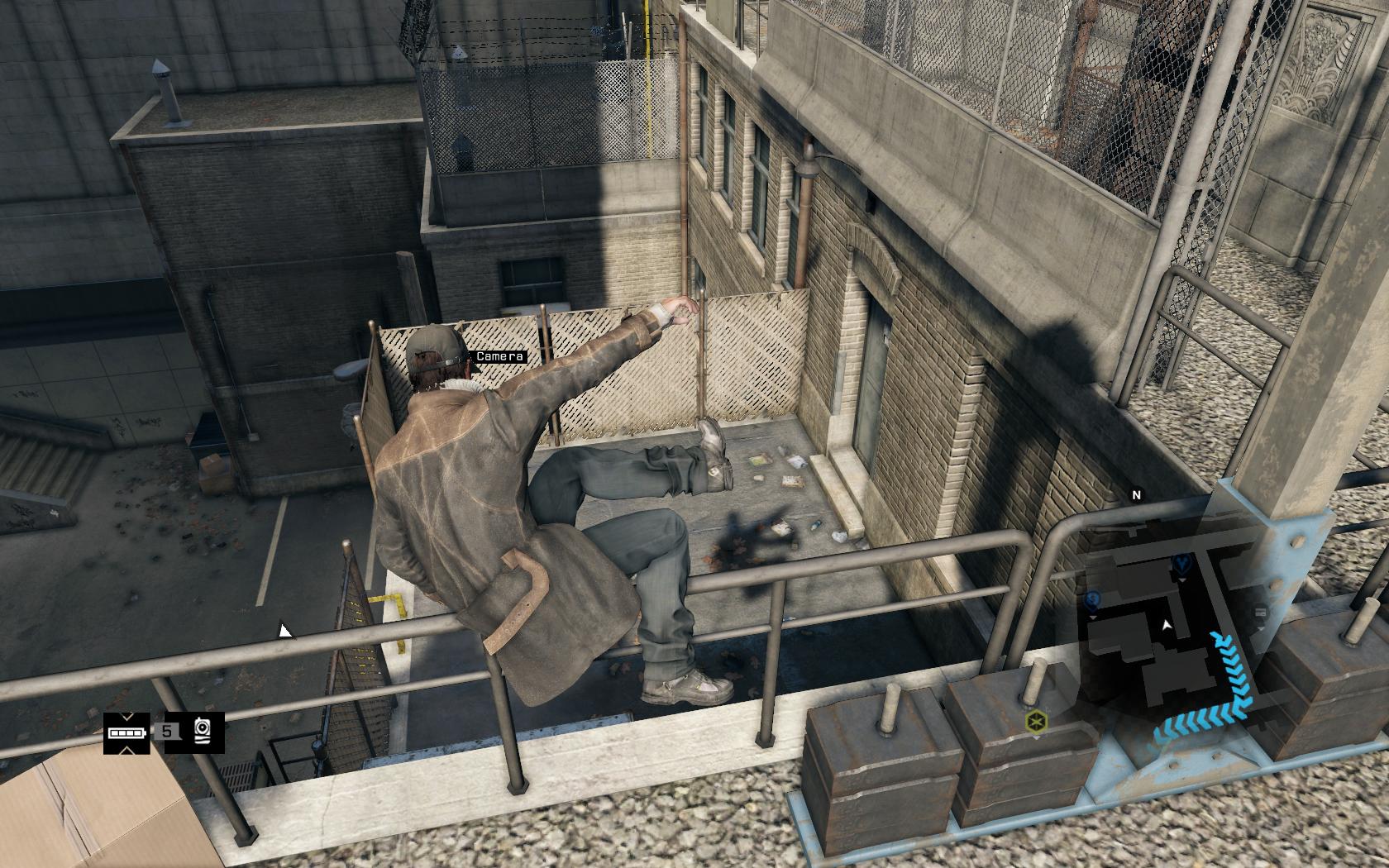
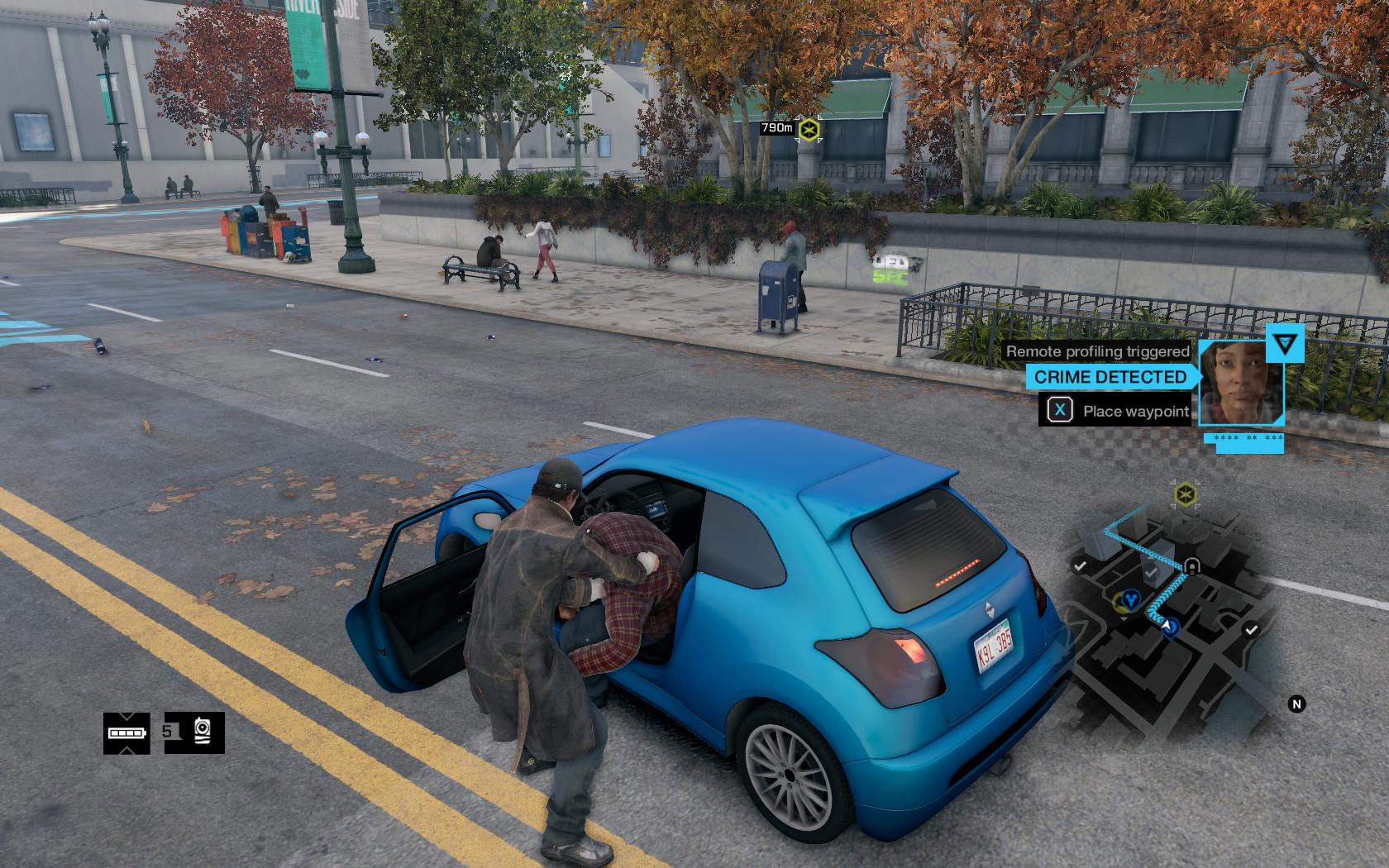
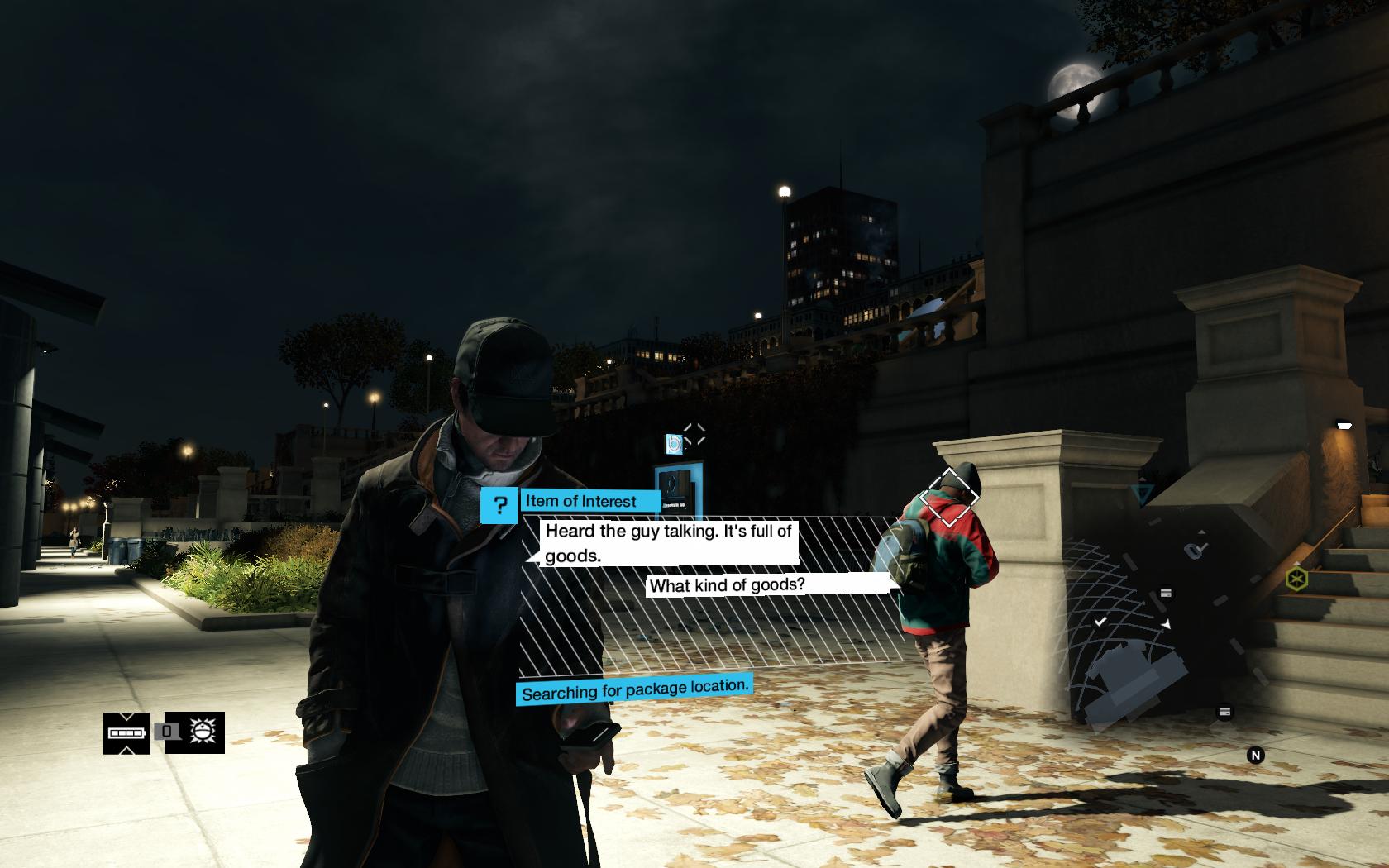
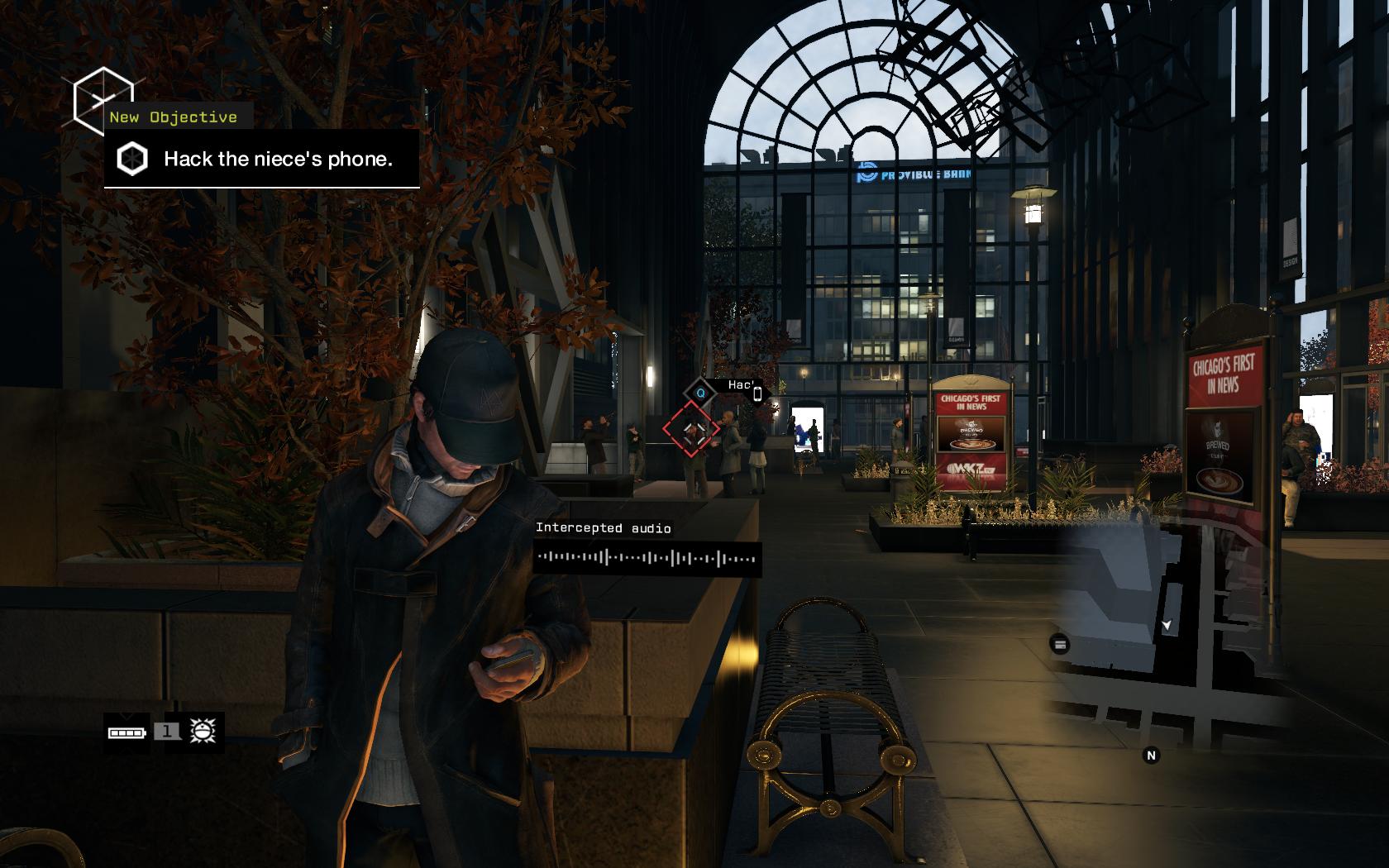
Creative hacking and covert multiplayer modes bring exciting new life to otherwise familiar open-world man-shooting.

Chris started playing PC games in the 1980s, started writing about them in the early 2000s, and (finally) started getting paid to write about them in the late 2000s. Following a few years as a regular freelancer, PC Gamer hired him in 2014, probably so he'd stop emailing them asking for more work. Chris has a love-hate relationship with survival games and an unhealthy fascination with the inner lives of NPCs. He's also a fan of offbeat simulation games, mods, and ignoring storylines in RPGs so he can make up his own.
